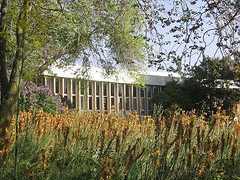  Baram: From Village to Kibbutz The Village of Baram, located in the Galilee Heights northeast of Safed, in the period of the Mishna was once a flourishing Jewish settlement. One of the most splendid synagogues remaining from that time was built in the center of the village in the third century C.E. Various evidence remains, relating to the settlement, which continued to exist during the Middle Ages. Known travelers recorded their visits to the site. A famous legend relates the story about the "Infant from the Villageof Baram.” A child prodigy named Nahman the son of Pinchas and Rachel, immediately upon birth spoke words of Torah. His father, who was a great rabbi, silenced him; however, when he reached the age of 12, he again opened his mouth and spoke prophetic works – whereupon he died. Accordingly he was called "Nahman the Snatched” because he was snatched from life. In the 16th century, when Safed was a center of Torah and Kabala, the local Jewish settlement at the village increased in size. Venetian coins, which were uncovered, are proof of the communication between and the aid from Italian Jewry during the Renaissance. Because of economic crisis and lack of security in the 18th century, its Jewish population abandoned the village At late 16th century, Maronite Christian Arameans settled the site, calling it Birim. In 1861 the French scholar Ernest Renan headed an archeological team, which passed through Baram, carrying off to France a lintel to the entrance of a second synagogue, engraved with a rare Hebrew inion from the Mishna period. The lintel rested in the storerooms of the Louvre Museum in Paris until, upon the instigation of a member of Baram, it was returned for a temporary exhibition in Baram’s Bar David Museum. Afterwards the ancient lintel was transferred to the Israel Museum in Jerusalem, where it is exhibited until this day, on loan from the Louvre. The Bar David Museum possesses the single copy with its exciting inion: "May there be peace in this place and in all places of Israel. Jose the Levite, the son of Levi made this lintel. May blessings come upon his deeds.” In Israel’s War of Independence the Maronites were evacuated from their village, eventhough they had welcomed Israeli soldiers with open arms. They were resettled in Gush Halav (Jish). In their sted, a group of young people – mainly demobilized Palmach soldiers who belonged to the Hashomer Hazair movement, renewed Jewish settlement on the ancient site. Two years later they established their permanent settlement Kibbutz Baram two kilometers to the north. Birim evacuees still have not been allowed to return despite legal decisions and official promises. ![]()
| 